 Bailey Connolly & Isabelle Frances McGuire 1635 W Grand Ave, 2021 / Enamel Exterior Paint (Beauty Queen) dimensions variable
Bailey Connolly & Isabelle Frances McGuire 1635 W Grand Ave, 2021 / Enamel Exterior Paint (Beauty Queen) dimensions variable
 Installation view
Installation view
 Installation view
Installation view
 Bailey Connolly, Untitled (Ethical Configuration 02), 2021 / expanded PVC, sequin pins, aluminum flashing, protection plastic, spray paint, acrylic paint, aluminum tape, duct tape, contact cement, marker 7.25 x 12.25 x 48 in
Bailey Connolly, Untitled (Ethical Configuration 02), 2021 / expanded PVC, sequin pins, aluminum flashing, protection plastic, spray paint, acrylic paint, aluminum tape, duct tape, contact cement, marker 7.25 x 12.25 x 48 in
 Bailey Connolly, Untitled (Ethical Configuration 02), 2021 / expanded PVC, sequin pins, aluminum flashing, protection plastic, spray paint, acrylic paint, aluminum tape, duct tape, contact cement, marker 7.25 x 12.25 x 48 in
Bailey Connolly, Untitled (Ethical Configuration 02), 2021 / expanded PVC, sequin pins, aluminum flashing, protection plastic, spray paint, acrylic paint, aluminum tape, duct tape, contact cement, marker 7.25 x 12.25 x 48 in
 detail of Untitled (Ethical Configuration 02)
detail of Untitled (Ethical Configuration 02)
 Installation view
Installation view
 Bailey Connolly, Untitled (Ethical Configuration 09), 2021 / expanded PVC, sequin pins, aluminum flashing, protection plastic, enamel paint, spray paint, aluminum tape, duct tape, contact cement, marker 14.25 x 12.25 x 24 in
Bailey Connolly, Untitled (Ethical Configuration 09), 2021 / expanded PVC, sequin pins, aluminum flashing, protection plastic, enamel paint, spray paint, aluminum tape, duct tape, contact cement, marker 14.25 x 12.25 x 24 in
 Bailey Connolly, Untitled (Ethical Configuration 09), 2021 / expanded PVC, sequin pins, aluminum flashing, protection plastic, enamel paint, spray paint, aluminum tape, duct tape, contact cement, marker 14.25 x 12.25 x 24 in
Bailey Connolly, Untitled (Ethical Configuration 09), 2021 / expanded PVC, sequin pins, aluminum flashing, protection plastic, enamel paint, spray paint, aluminum tape, duct tape, contact cement, marker 14.25 x 12.25 x 24 in
 detail of Untitled (Ethical Configuration 09)
detail of Untitled (Ethical Configuration 09)
 Installation view
Installation view
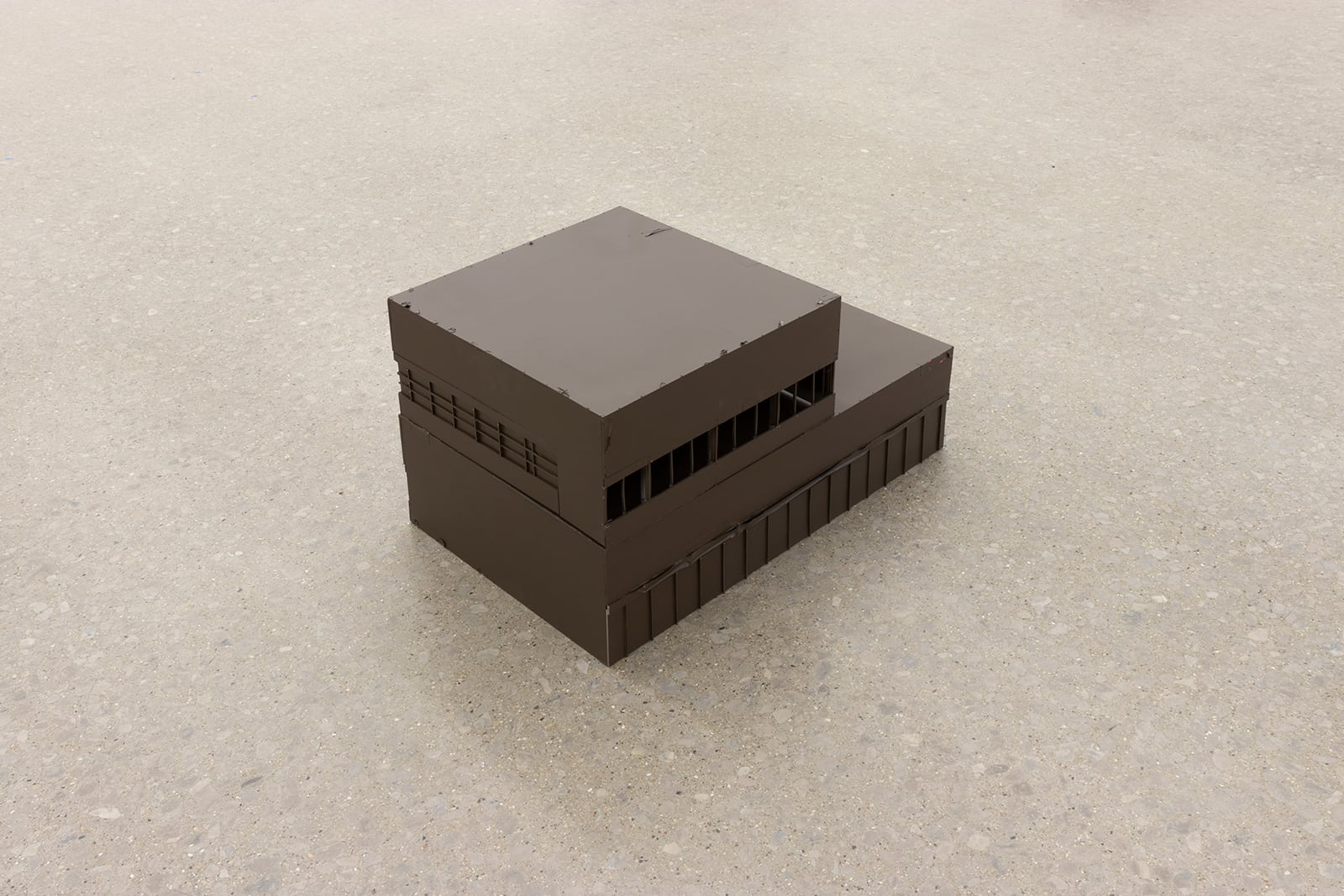 Bailey Connolly, Untitled (Ethical Configuration 07), 2021 / expanded PVC, sequin pins, protection plastic, spray paint, aluminum tape, duct tape, contact cement, glue adhesive 14.25 x 12.25 x 24 in
Bailey Connolly, Untitled (Ethical Configuration 07), 2021 / expanded PVC, sequin pins, protection plastic, spray paint, aluminum tape, duct tape, contact cement, glue adhesive 14.25 x 12.25 x 24 in
 Bailey Connolly, Untitled (Ethical Configuration 07), 2021 / expanded PVC, sequin pins, protection plastic, spray paint, aluminum tape, duct tape, contact cement, glue adhesive 14.25 x 12.25 x 24 in
Bailey Connolly, Untitled (Ethical Configuration 07), 2021 / expanded PVC, sequin pins, protection plastic, spray paint, aluminum tape, duct tape, contact cement, glue adhesive 14.25 x 12.25 x 24 in
 Installation view
Installation view
 Installation view
Installation view
 Bailey Connolly & Isabelle Frances McGuire Bonnie, Painting, 2021 / unique inject print 45 x 35.5 in
Bailey Connolly & Isabelle Frances McGuire Bonnie, Painting, 2021 / unique inject print 45 x 35.5 in
 Installation view
Installation view
 Bailey Connolly, ex (spirit), 2021 / expanded PVC, wooden dowels, sequin pins, map pins, aluminum flashing, window screen, polyester film, enamel paint, spray paint, acrylic paint, rivets, aluminum tape, transparent tape, glue adhesive, graphite 16 x 44 x 24.5 in
Bailey Connolly, ex (spirit), 2021 / expanded PVC, wooden dowels, sequin pins, map pins, aluminum flashing, window screen, polyester film, enamel paint, spray paint, acrylic paint, rivets, aluminum tape, transparent tape, glue adhesive, graphite 16 x 44 x 24.5 in
 Bailey Connolly, ex (spirit), 2021 / expanded PVC, wooden dowels, sequin pins, map pins, aluminum flashing, window screen, polyester film, enamel paint, spray paint, acrylic paint, rivets, aluminum tape, transparent tape, glue adhesive, graphite 16 x 44 x 24.5 in
Bailey Connolly, ex (spirit), 2021 / expanded PVC, wooden dowels, sequin pins, map pins, aluminum flashing, window screen, polyester film, enamel paint, spray paint, acrylic paint, rivets, aluminum tape, transparent tape, glue adhesive, graphite 16 x 44 x 24.5 in
 Bailey Connolly, ex (spirit), 2021 / expanded PVC, wooden dowels, sequin pins, map pins, aluminum flashing, window screen, polyester film, enamel paint, spray paint, acrylic paint, rivets, aluminum tape, transparent tape, glue adhesive, graphite 16 x 44 x 24.5 in
Bailey Connolly, ex (spirit), 2021 / expanded PVC, wooden dowels, sequin pins, map pins, aluminum flashing, window screen, polyester film, enamel paint, spray paint, acrylic paint, rivets, aluminum tape, transparent tape, glue adhesive, graphite 16 x 44 x 24.5 in
 Installation view
Installation view
 Installation view
Installation view
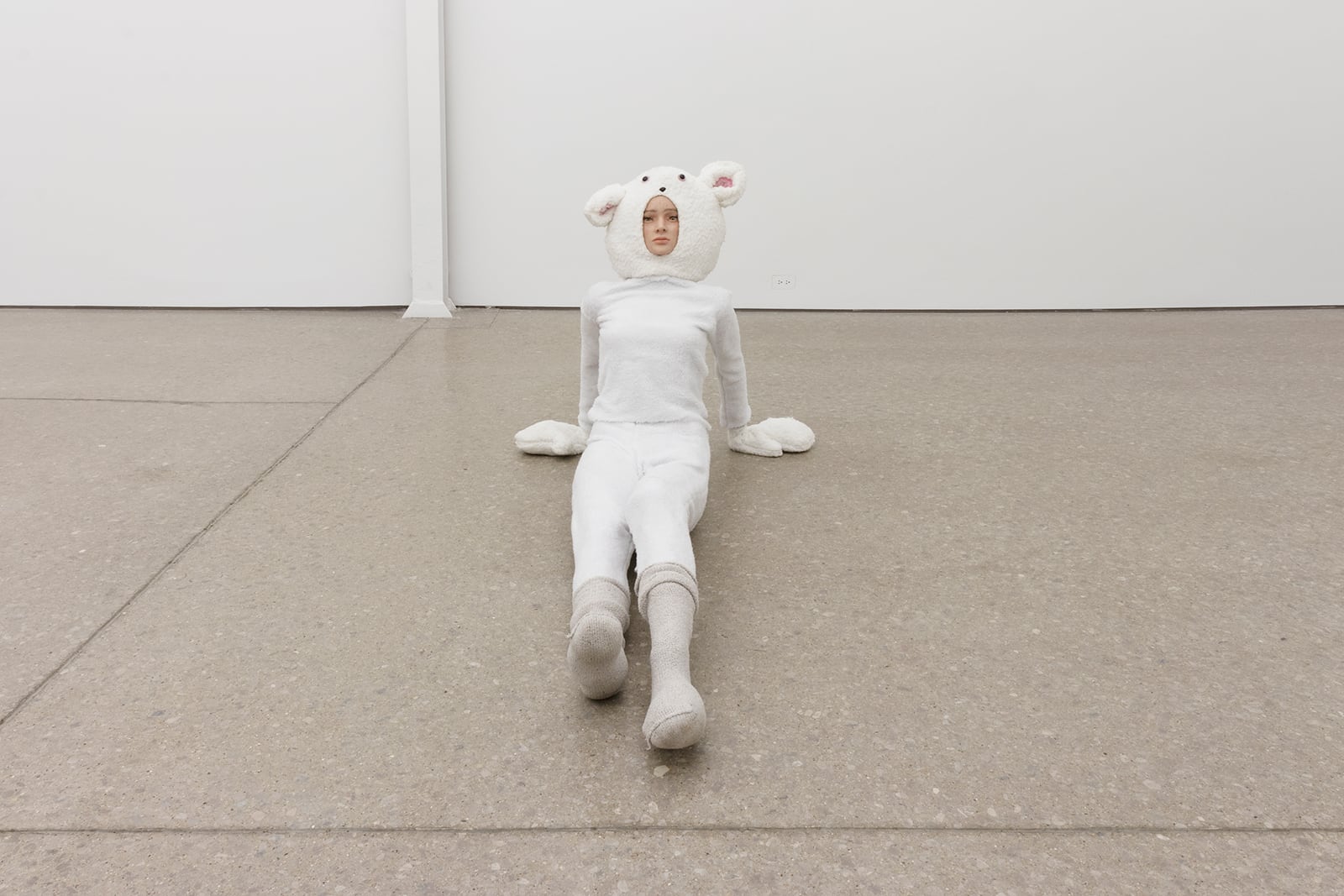 Isabelle Frances McGuire, All Artists, Models, 2021 / fabric, silicon, resin, human hair, DC motor, “The Heart of Perfect Petzzz” D Battery 36 x 38 x 60 in
Isabelle Frances McGuire, All Artists, Models, 2021 / fabric, silicon, resin, human hair, DC motor, “The Heart of Perfect Petzzz” D Battery 36 x 38 x 60 in
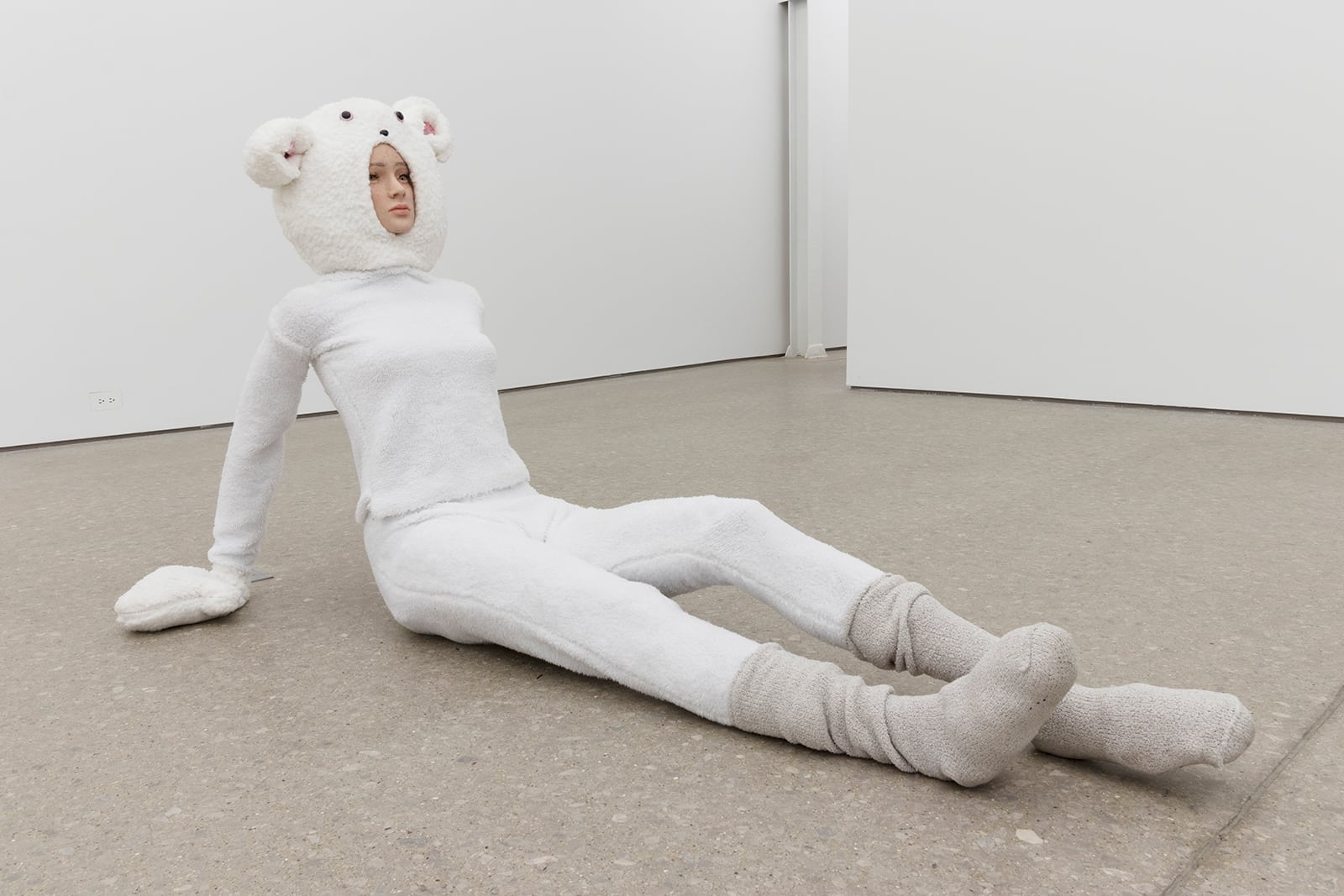 Isabelle Frances McGuire, All Artists, Models, 2021 / fabric, silicon, resin, human hair, DC motor, “The Heart of Perfect Petzzz” D Battery 36 x 38 x 60 in
Isabelle Frances McGuire, All Artists, Models, 2021 / fabric, silicon, resin, human hair, DC motor, “The Heart of Perfect Petzzz” D Battery 36 x 38 x 60 in
 Isabelle Frances McGuire, All Artists, Models, 2021 / fabric, silicon, resin, human hair, DC motor, “The Heart of Perfect Petzzz” D Battery 36 x 38 x 60 in
Isabelle Frances McGuire, All Artists, Models, 2021 / fabric, silicon, resin, human hair, DC motor, “The Heart of Perfect Petzzz” D Battery 36 x 38 x 60 in
 detail of All Artists, Models
detail of All Artists, Models
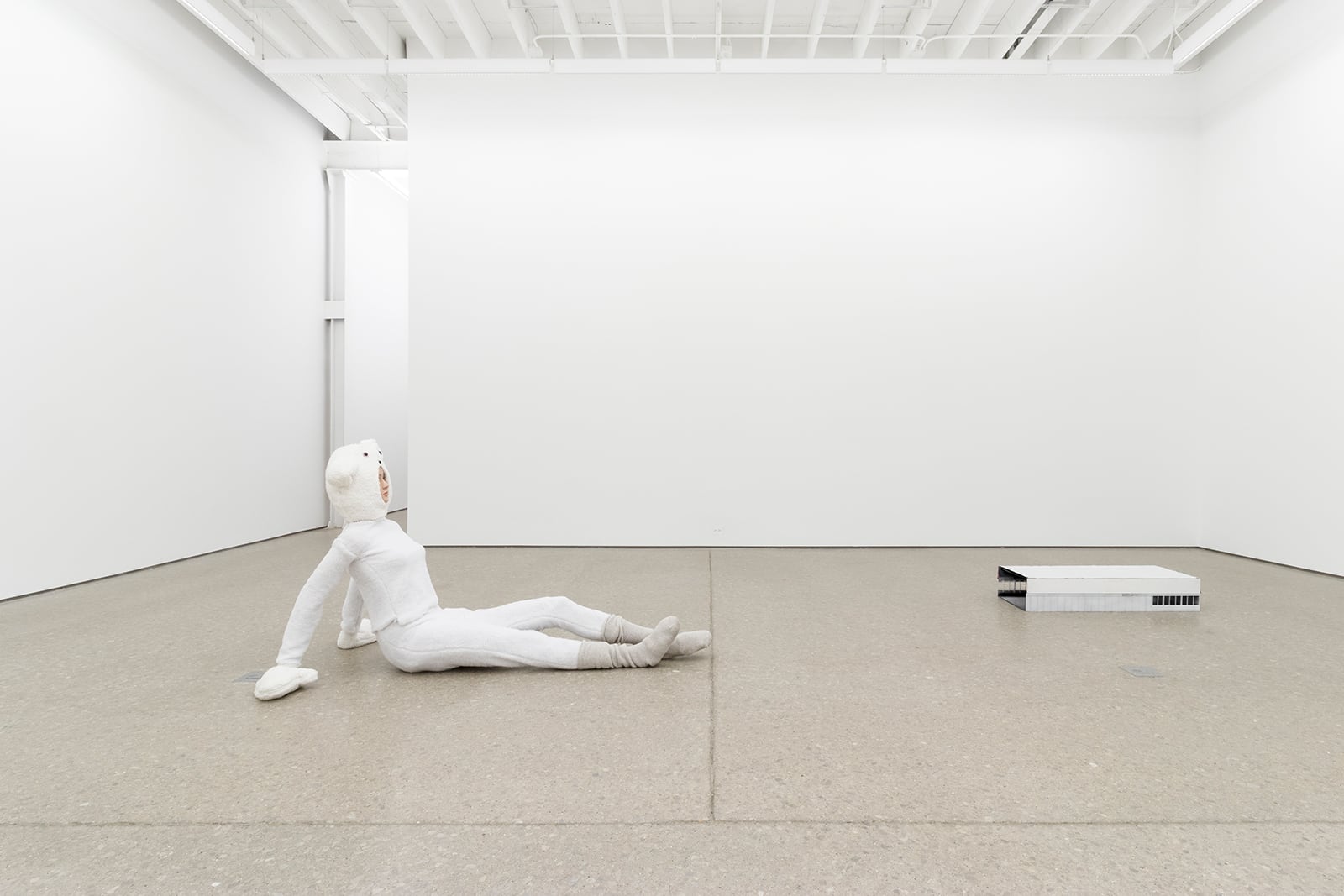 Installation view
Installation view
 Bailey Connolly, Untitled (Ethical Configuration 01), 2021 / expanded PVC, sequin pins, aluminum flashing, protection plastic, spray paint, acrylic paint, aluminum tape, marker, pencil 7.25 x 15.5 x 38.5 in
Bailey Connolly, Untitled (Ethical Configuration 01), 2021 / expanded PVC, sequin pins, aluminum flashing, protection plastic, spray paint, acrylic paint, aluminum tape, marker, pencil 7.25 x 15.5 x 38.5 in
 Bailey Connolly, Untitled (Ethical Configuration 01), 2021 / expanded PVC, sequin pins, aluminum flashing, protection plastic, spray paint, acrylic paint, aluminum tape, marker, pencil 7.25 x 15.5 x 38.5 in
Bailey Connolly, Untitled (Ethical Configuration 01), 2021 / expanded PVC, sequin pins, aluminum flashing, protection plastic, spray paint, acrylic paint, aluminum tape, marker, pencil 7.25 x 15.5 x 38.5 in
 detail of Untitled (Ethical Configuration 01)
detail of Untitled (Ethical Configuration 01)
 detail of Untitled (Ethical Configuration 01)
detail of Untitled (Ethical Configuration 01)
 Installation view
Installation view
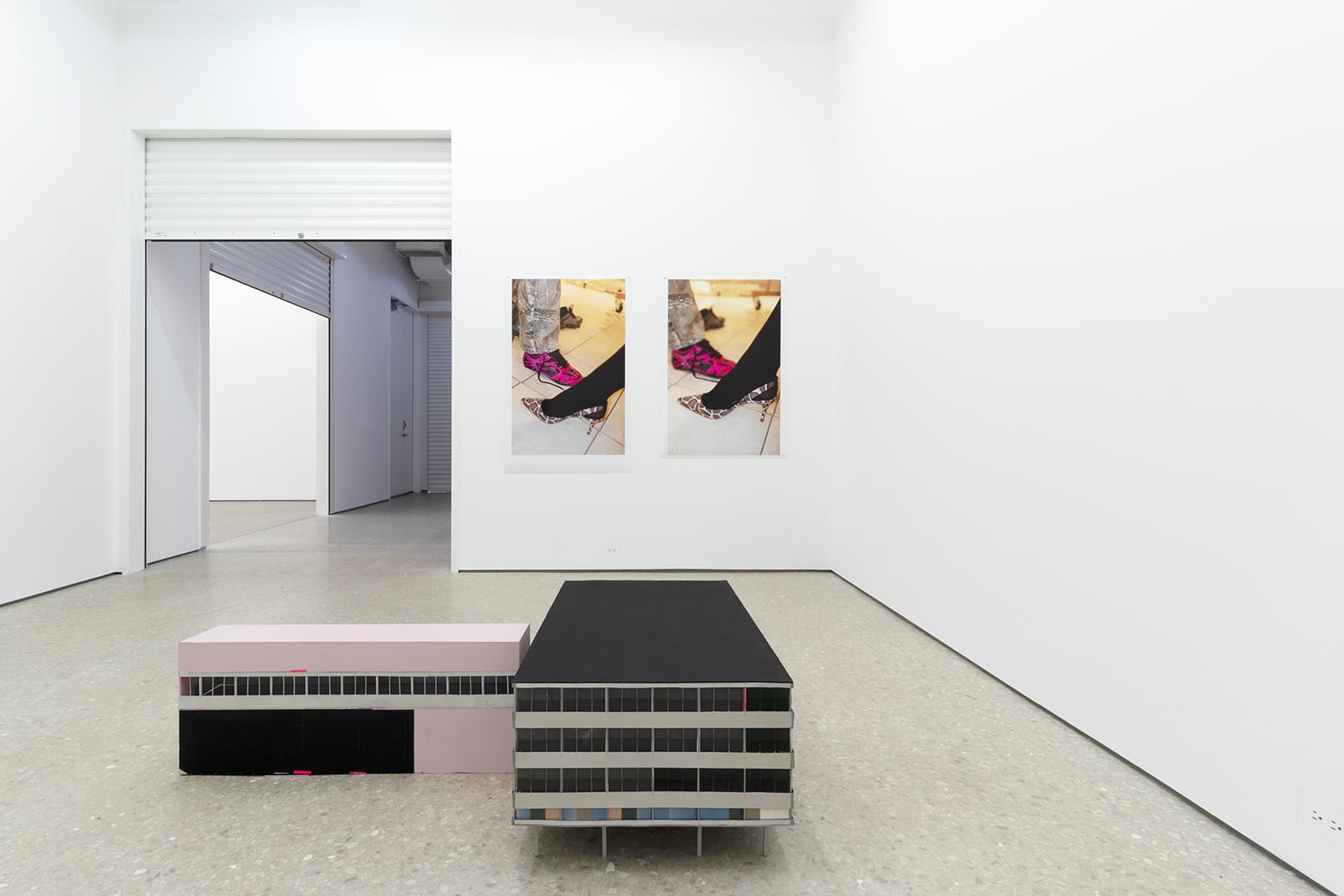 Installation view
Installation view
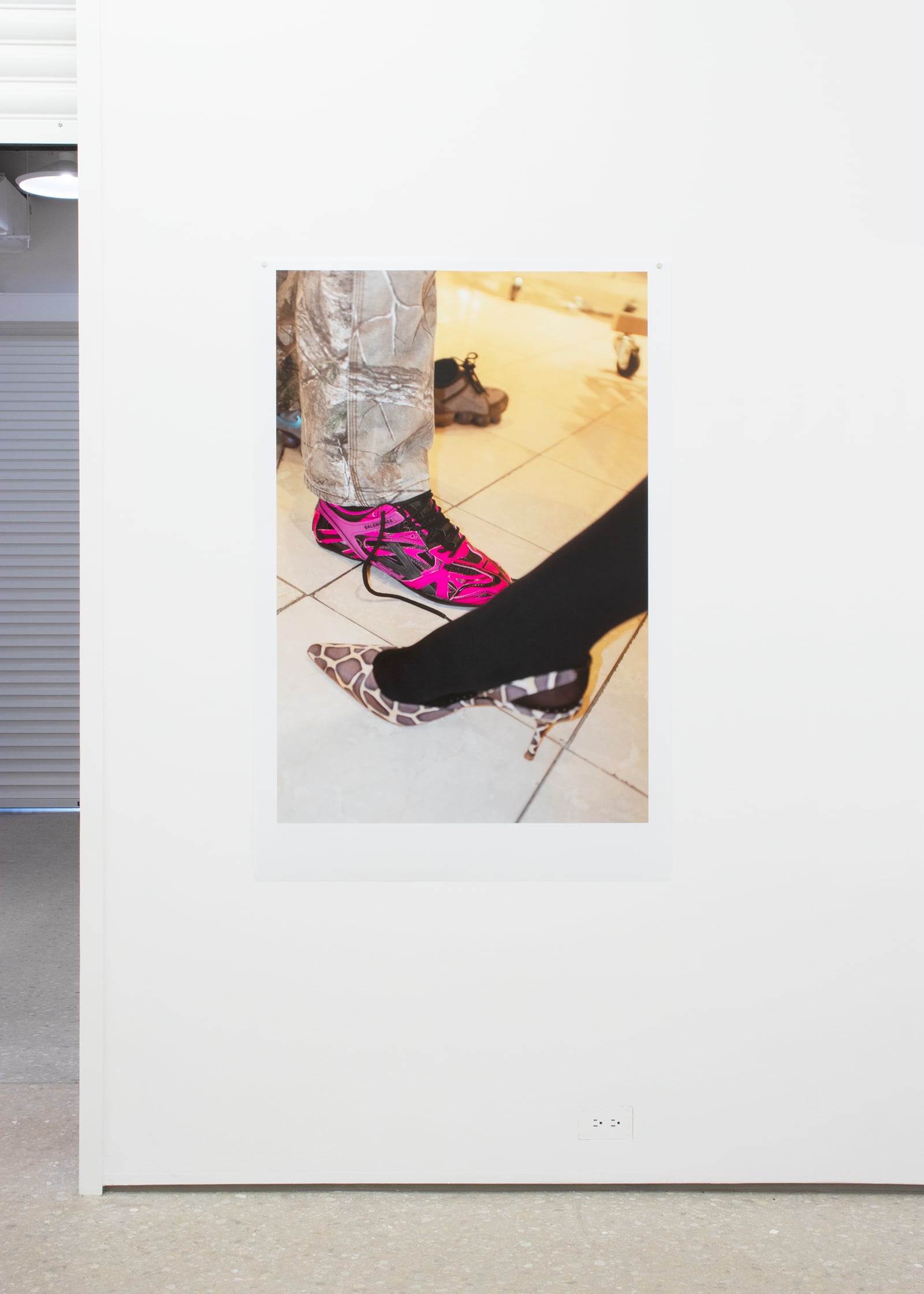 Installation view
Installation view
 Bailey Connolly & Isabelle Frances McGuire untitled, 2021 / unique inject print 53 x 35.5 in
Bailey Connolly & Isabelle Frances McGuire untitled, 2021 / unique inject print 53 x 35.5 in
 Installation view
Installation view
 Installation view
Installation view
 Bailey Connolly & Isabelle Frances McGuire untitled, 2021 / unique inject print 49 x 35.5 in
Bailey Connolly & Isabelle Frances McGuire untitled, 2021 / unique inject print 49 x 35.5 in
 Installation view
Installation view
 Bailey Connolly, Her Cock (Ethical Configuration 12), 2021 / expanded PVC, sequin pins, spray paint, aluminum tape, duct tape, contact cement, marker 14.5 x 8 x 35.5 in
Bailey Connolly, Her Cock (Ethical Configuration 12), 2021 / expanded PVC, sequin pins, spray paint, aluminum tape, duct tape, contact cement, marker 14.5 x 8 x 35.5 in
 Bailey Connolly, Her Cock (Ethical Configuration 12), 2021 / expanded PVC, sequin pins, spray paint, aluminum tape, duct tape, contact cement, marker 14.5 x 8 x 35.5 in
Bailey Connolly, Her Cock (Ethical Configuration 12), 2021 / expanded PVC, sequin pins, spray paint, aluminum tape, duct tape, contact cement, marker 14.5 x 8 x 35.5 in
 Installation view
Installation view
 Bailey Connolly, Orientation, 2020 / ACM, expanded PVC, sequin pins, aluminum flashing, window screen, construction paper, polyester film, enamel paint, spray paint, aluminum tape, glue adhesive, marker 14.25 x 12.25 x 24 in
Bailey Connolly, Orientation, 2020 / ACM, expanded PVC, sequin pins, aluminum flashing, window screen, construction paper, polyester film, enamel paint, spray paint, aluminum tape, glue adhesive, marker 14.25 x 12.25 x 24 in
 Bailey Connolly, Orientation, 2020 / ACM, expanded PVC, sequin pins, aluminum flashing, window screen, construction paper, polyester film, enamel paint, spray paint, aluminum tape, glue adhesive, marker 14.25 x 12.25 x 24 in
Bailey Connolly, Orientation, 2020 / ACM, expanded PVC, sequin pins, aluminum flashing, window screen, construction paper, polyester film, enamel paint, spray paint, aluminum tape, glue adhesive, marker 14.25 x 12.25 x 24 in
 detail of Orientation
detail of Orientation
 Installation view
Installation view
 Installation detail
Installation detail
Something Something Emptiness
When I was still living in Los Angeles, I sometimes walked to the nearby mall. Though developed as a shopping “plaza”, it hews closely to the familiar mall type: large, enclosed, with sprawling plan and uneven elevation; in the basement a Jollibee and a Filipino market, further up a Target, a Macy’s, and even a Chuck E. Cheese. The mall’s main entrance was on its second floor, though getting here was often difficult. A half-subterranean parking structure separates street from building: concrete ramps with one-way signage, sand filled barriers, a web of zig-zagging crosswalks. And once inside, the confounding design of the mall’s interior made for additional challenges. I could get lost quite easily, for example, between the Target and the Jollibee, even though these were two of the only remaining tenants. The one-time shopper’s paradise, only recently a shrine to the suburban consumerist class, was suffering. What remained, besides the anchor tenants, were near-empty corridors sprinkled with leftover businesses: a once-dense labyrinth whose shoots were now brittle and defoliated.
Still I enjoyed it there, and the denuded portions especially. In its emptiness, the mall’s nature is diminished, but still palpable. This nature, of the form and quality of the shopping center, is what Rem Koolhaas calls junkspace. Junkspace not just because of what the mall contains, but also—and importantly—because of the way it operates in the built and lived environment more generally. Junk in the descriptive sense: the junk that even in a mostly empty Eagle Rock Plaza was still sticking to the walls of deserted storefronts in the guise of wood laminate shoe racks and pegboard clothing organizers, seeping through locked metal security gates as stained polyester floor coverings patterned with decade-old geometries. Junk as dead end service corridors, staircases and escalators scattered randomly about multiple levels, distorted corners of dead space with large installations of fake plants. But also “junk” as in the current of junk that the mall itself represents to denizens and detractors alike. Junk as it’s used to describe certain candies: too-sweet and lousily formulated, but enticing nevertheless.
Junkspace was published first in 2006, some time before the onset of the financial crisis and thus predating the subsequent decline of the American shopping center. While that ostensible subject of his essay may have since receded in the collective imagination, the societal themes that Koolhaas identifies via their interactions with junkspace are no less relevant today. He relates a space still acting as container for a vibrant consumption-oriented ecosystem, one densely populated and perpetually pushing outward; junkspace itself metastasizing into every available corner of the yet-to-be-built environment, while junkspace-dwellers follow in its wake. This relationship, however, between society and its evolving environment, doesn’t operate in a single direction. Junkspace not only conditions a population to live by its maxims, but is in fact itself conditioned by existing values and norms within that population. It is a phenomenon linked at its origins to the rampantglobalization of the preceding decades. The product of a megalomaniacal instinct within the modern and a monument to the disposal-disposed: to junkbeing.
Junkbeing is the feeling I get somewhere between the Target and the Jollibee. To the extent to which this sentiment fades as I venture away from the shopping mall’s core, toward its barren extremities,
it nonetheless appears increasingly often in other aspects of my life. Junkspace might be vacating, dropping its leaves, crumbling: but junkbeing finds residence elsewhere. If the act of adolescent seeing-and-being-seen now occurs primarily on social media, instead of at the mall; if we shop on Amazon and not at Zumiez; meet for work over FaceTime, instead of at the office; then junkbeing
has managed to invade these latter, virtual spaces as well. In the ever-evolving dialectic of our shared experience, between state-of-being and state-of-the-world, junk persists. Even architecture-space— with its firms like Koolhaas’ OMA —has more or less accepted junk as a condition of its practice, sometimes even celebrating it. Dispersion, alienation, consumerism: these facts of the contemporary— antecedents of junk—are asserted ever more forcefully across various disciplines and media.
In a certain sense our existence online, today, isn’t so unlike our existence offline—in the “real world” —of a decade or two ago. A teenager performing on Tiktok, for example, acts on many of the same social instincts that induced his predecessor, twenty years earlier, to show up at the mall and “perform” among his peers. There are differences, of course, between time and setting, place and platform; and though much has changed between Mall Rats and Tiktok, it is easier to acknowledge the breadth of this “between” than to identify discrete instances of change within it. A point at which apparently nothing changed, but that seems in retrospect to have been particularly burdened by betweenness, came with Marina Abramović’s 2010 performance The Artist is Present.
Remarkably spare in its presentation, the feverish reception of The Artist is Present by public and press elevated it to near-spectacle; entirely divorced from the the sociopolitical context of the post- recession, pre–Occupy New York in which it was staged, the performance still managed to attract vast hordes of visitors and moved many participants to tears. Seated at a table for hours a day, over the course of several weeks, Abramović stared straight ahead while visitors to the museum were invited to sit across from her one at a time and make eye contact. The artist, opulently clothed in large flowing dresses of red, white and black, is nonetheless denuded, in this setting, of most aspects of her social being. A body is present, makes eye contact, occasionally emotes: that body, however, though it belongs to the artist, is not activated by her. Instead those seated across the table are presented with a sort of Abramović surrogate, a stand-in. A four-dimensional image of the artist—a ghost—that references her person as if from some distance: present, certainly, but not in the word’s fullest sense.
A slight rhyme of the meaning of that word “present”—there in the title as the artist was verifiably, though not altogether, there in the performance—is perhaps as much irony as could be tolerated by an artwork that was otherwise all sincerity and self-seriousness. But that small bit of irony adds a great deal of complexity to an otherwise straightforward work. It’s an irony of presence confronting absence, of an image insisting on its own corporeality—and it’s a device the Tiktok crowd seems to understand intuitively. There the performer assumes some character, a famous singer for example, and displays a sincere pretension to the qualities of that character. That pretension is, however, always already invalidated: by the performer’s sub-standard abilities, or a ridiculous outfit, or a filter that turns her into a dinosaur. A stress on the relationship, between the image and the animating force behind it, flattens the reference: the audience is struck by a surplus of affect, as actors disappear not so much into character, but into the act itself.
The Artist is Present may have been heavy on pretense—less conscious of its own tendency toward affect—but what Abramović achieved in presenting, absent herself, was a kind of shell of that self: a mostly-vacant husk of being that feels empty and melancholic and somehow also close to bursting with intense emotive potential. To the extent to which such an act or attitude can be consciously employed—and not just compulsively propagated on the internet—it would seem to have an aesthetic potential even beyond that of the ever-emptying shopping centers of which I am so fond.
— AR